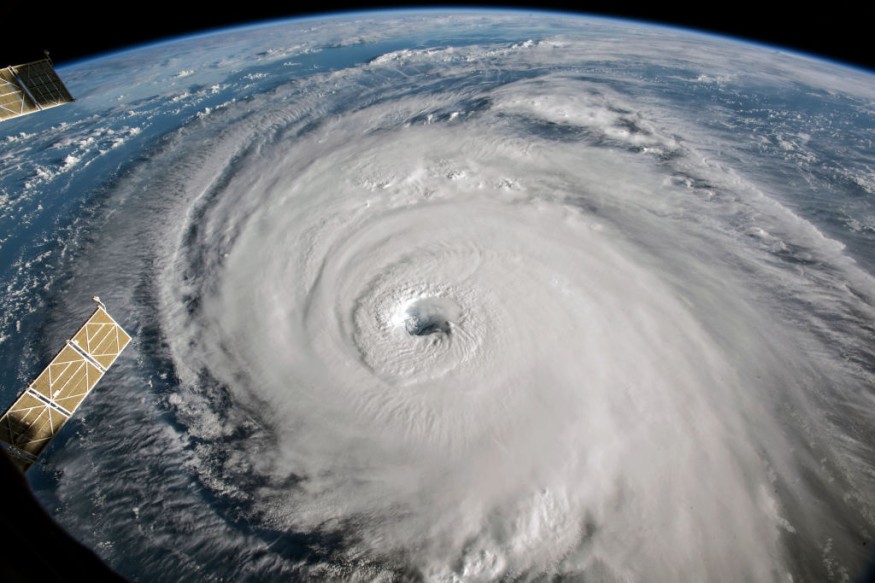As the Memorial Day weekend passed, AccuWeather meteorologists warned that rounds of strong thunderstorms might cause considerable damage and disruption throughout the northern and central Plains.

This comes on top of a busy period of extreme weather. On Saturday, the Storm Prediction Center received over 20 reports of significant hail and destructive winds. Wind gusts of 75 miles per hour were reported at Gillette, Wyoming, and Buffalo, South Dakota.
Storms Incoming
Storms rumbled through areas of the central and northern Plains again Sunday evening and overnight. Storms in far western Nebraska created powerful and locally destructive gusts before dropping hail softballs in Taylor, Nebraska, some 90 miles northeast of North Platte, Nebraska. Those severe storms continued into South Dakota and Minnesota early Monday morning, bringing the potential of destructive winds, hail, and a handful of tornadoes.
Flooding was a threat as well. Rainfall from these storms might fall quicker than the earth can absorb, posing a risk of flash flooding.
Forecasts
As forecasters have recently reported, many of these places have been hammered by powerful storms and devastating winds lately. A derecho pounded the northern Plains with 100 mph winds earlier this month, killing two people.
The extreme weather danger will last until Monday, when it is expected to be the most widespread. According to AccuWeather, the eastern Dakotas and western Minnesota are expected to be in the greatest hazard region. A more isolated severe threat, on the other hand, may spread southward into Kansas and Missouri, as well as eastward into the Mississippi River.
After strong nighttime storms, Sioux Falls, South Dakota, will be threatened by extreme weather. Other cities in the danger region include Omaha, Nebraska, Aberdeen, South Dakota, and Fargo, North Dakota.
Inevitable Extreme Weather
Extreme weather will be conceivable on Monday, just as it was on Sunday. On Monday, though, the danger of tornadoes will be increased, with the possibility of a few severe and long-tracked tornadoes. In the case of severe and devastating storms, residents in the hazard region should keep an eye on the newest watches and warnings.
Storms may build into a more solid line further north and east near cities like Minneapolis and Duluth, Minnesota, raising the possibility of destructive wind gusts.
Due to excessive spring rains, certain region rivers, such as the Red River of the North, are still over flood level, and Monday's storms will exacerbate the problem.
"With storms located closer to the Red River on Monday, flooding will be a problem again," Geiger stated. "With heavy rain on top of saturated terrain, these storms will exacerbate the current flood scenario."
The big rains may be more required further south. Much of the central Plains is still suffering from drought. According to the United States Drought Monitor, 94% of Nebraska and 59 percent of South Dakota are experiencing at least a moderate drought. Drought Watch.
However, some of these drought-stricken places may get too much of a good thing on Tuesday.
On Tuesday, the severe danger will shift southeast east, affecting a region that stretches from the Texas High Plains to eastern Wisconsin. The southern portion of this area, on the other hand, may receive the most violent storms.
These storms are likely to bring damaging winds and hail. Like in recent days, the most severe storms may produce hail larger than two inches in diameter. This hail may shatter windows and windshields, dent cars, and damaged roofs.
Isolated Tornado Risk
Isolated tornadoes are also conceivable, although the risk of severe, long-tracked tornadoes will be reduced compared to Monday. "Tuesday's storms will be farther away from the strong jet stream and storm system moving along it," Geiger noted, "reducing the overall tornado danger."
Residents in Amarillo, Texas, Kansas City, Missouri, and Milwaukee, Wisconsin, should be mindful of the potential for dangerous weather on Tuesday.
Flooding will be a threat throughout parts of the central Plains, in addition to severe thunderstorms, as repeated rounds of rain and storms hit the same areas. While these storms will be smaller and less severe than those on Monday, Mother Nature has already demonstrated that a big outbreak is not required to pose a threat to life and property. As storms pass through, rainfall totals can swiftly grow over hours, known as "training."
The worst danger of flooding is forecast on Tuesday, but extra storms expected to hit on Wednesday might exacerbate the situation. Because the land is already saturated and there is already a big amount of water in rivers and streams, it will take considerably less rain to generate the same flooding effects.
Back to Normal
Fortunately, meteorologists predict a gradual return to drier conditions. While some minor activities may linger into Thursday, the rest of the week appears to be dry and tranquil.
Related Article : Exposure to Major Disasters Can Cause Long-Term Mental Health Problems
For more climate and weather updates, don't forget to follow Nature World News!
© 2025 NatureWorldNews.com All rights reserved. Do not reproduce without permission.





